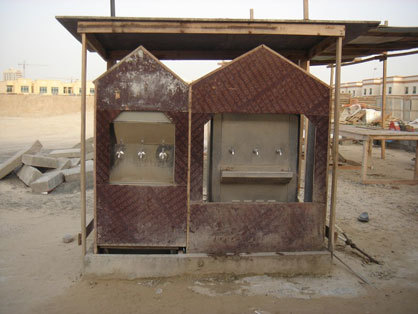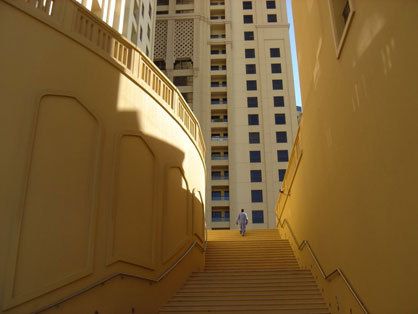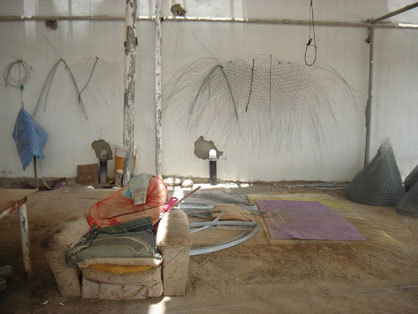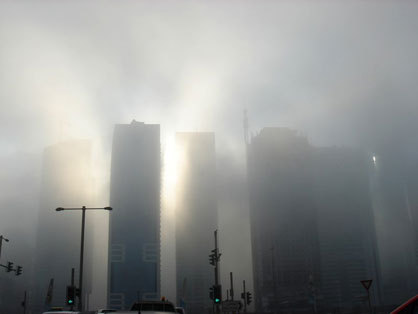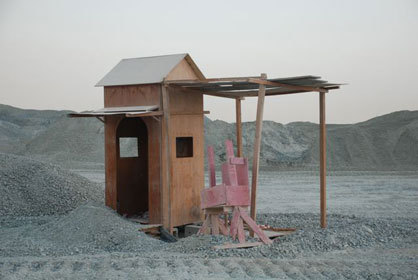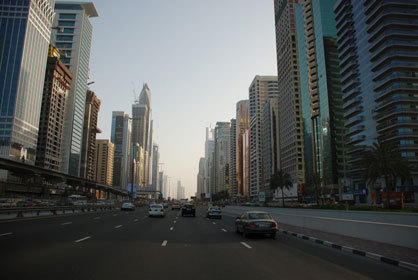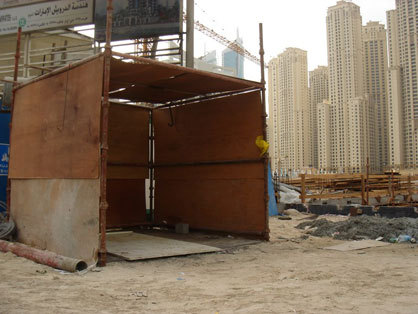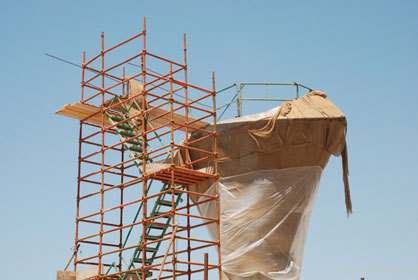Wooden shacks and delusions of grandeur
Texte par Line Numme
Zürich, Suisse
13.11.08
Katrin Greiling currently lives and works as a designer in Dubai, where she constantly tours the city with her camera, recording in her photographs everyday life in this unique cosmopolitan metropolis within the Arab world. A world of contradictions.
Dubai aims to grow taller, bigger and more impressive. The city invests its entire riches in the creation of an infrastructure which is intended to transform Dubai into the world's largest metropolis in the near future. These riches – generated by the region's former oil reserves – are now being poured into a range of new mega-projects aimed at supporting the future main sectors of the economy, such as tourism, trade and logistics.
The 'Burj Dubai', the world's highest building, will soon be completed. The largest shopping centre in the world, the 'Dubai Mall' has just opened its gates. Seven more artificial island worlds are to be created by 2010. On one island the world's first underwater hotel, the 'Hydropolis' had its grand opening just a few days ago. However, probably the largest and most long-term project is the airport, which is to be the world's biggest and by the year 2025 will cover an area of 140 km².
How is all this to be achieved? On the one hand by vast wealth and on the other by visionary rulers. And last but not least by an enormous army of immigrant workers. The country's population consists to 85% of foreigners, mainly strong young men recruited from countries like India, Pakistan and Indonesia. But whereas the local population and highly qualified expatriate workers are as a rule well off, most manual workers receive very low wages, generally less than 5 USD a day. As a result their accommodation is often a hut or wooden shack on the construction site or on the edge of the nearby desert.


